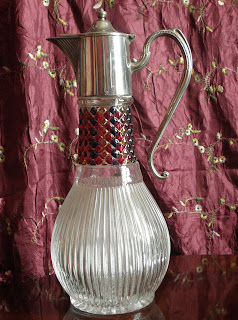In
his diary entry for Friday April 10th 1663, Samuel Pepys wrote that
he went to the Royall Oak Tavern, Lombard Street, where he, “…here drank a sort
of French wine, called Ho Bryan, that hath a good and most particular taste
that I never met with.”
Ho
Bryan is Haut Brion, a First Great Growth (Premier cru) Bordeaux wine, from
Pessac Léognan, in Graves (it is the only one which does not come from Médoc).
The first ‘clairets’ (Fr. ‘pale’) were wines came from Pessac Léognan, and were
originally light red wines, closer to our rosés. The English had already been
importing ‘clairet’ wines for over five hundred years, but they were rough,
thin wines, to be drunk immediately. Nevertheless, the English developed a
taste for the stuff, which they anglicised to ‘claret’, and over time the name
became used for dry, dark red wines from Bordeaux.
As
the quality of claret improved, it started to be kept in casks, to allow it to
mature and develop. At the same time, better corks were produced, which allowed
bottles to be ‘binned’ and kept on their sides. As the wine matured it threw
down a sediment (the lees), which had to be removed, or ‘racked off’, before
serving. The wine was ‘canted’ into decanters or jugs to be brought to table –
serving it straight from the bottle or the cask was not the ‘done thing’ (just
as we like to serve milk in a jug, rather than plonking the milk bottle on the
table). This also allowed the wine to ‘breathe’, bringing it to room
temperature and developing the body, taste and bouquet. The practice of using
decanters then spread to spirits; we are more likely to use a decanter for
whisky rather than wine today.
Claret
in particular was decanted into jugs, which were originally solid silver, but
over time the traditional claret jug – glass, with a hinged silver lid –
developed, and were very popular with the Victorians and Edwardians. Here are a
couple of mine, which came from charity shops, at about a fiver apiece.
Another development of the decanter was the
ships decanter. These were made with the body of the decanter at the base, with
a long neck and handle. The low body transferred to weight and centre of
gravity to the bottom of the decanter, making it much harder for it to
overbalance, particularly when standing on the table on a ship rolling on the
waves at sea. I brought this one back from France. I bought it from a Cave in
Dinard, and paid somewhere in the region of £20 for it. I also bought some
chateau-bottled Bordeaux, at the recommendation of Monsieur le Patron, and very
good they were, too. The French only use the term ‘claret’ for export purposes
to England.




No comments:
Post a Comment